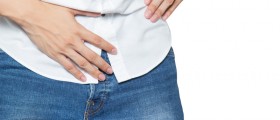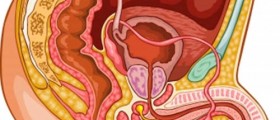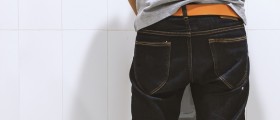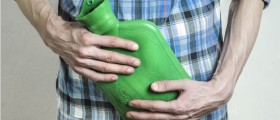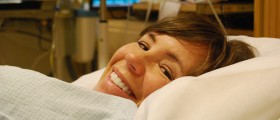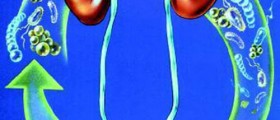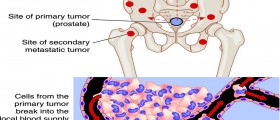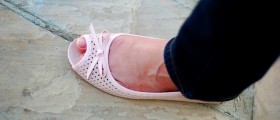Found out what the problem has been. This site does not like one word. I delete that word and it seems to work. Below is my post in its entirety.
This post reports complications (according to the Clavien-Dindo classification) from HoLEPs, a 13 years of follow up of 1000 patients from Dec 2003 to October 2016. The presentations were given in 2017 and 2018. This is the most recent compilation of HoLEP complications in the form of modern classification. With a 1000 patients, it is stastically significant snd trustworthy.
Main results (RE and other sexual dysfunctions were not reported):
(A) Early complications: failed initial voiding trial (10.8%), stress incontinence, (6%), frequency and dysuria (5.7%), urinary tract infection (5.2);
(B) Late complications: urethral stricture(4.9%), re-operation (2.7%);
(C) For prostate of big and small sizes: "the speaker determined that HoLEP is a safe and effective procedure for LUTS in patients with small and large prostates." The functional outcomes of HoLEP is as good as TURP and open prostatectomy but with fewer complications.
When the patients were divided into prostate resected weight of 80g:
"preoperative retention was found in 69.2% of patients with 80 grams of resected tissue as compared to 39.6% in ≤ 80 gram patients. Additionally, there was a significant amount of urethral strictures in patients with ≤ 80 grams, but the stricture rate was comparable to TURP.
There are two presentations: in the first presentation prostates are not divided into size group, whereas in the second presentation, HoLEP results for prostates are divided into 80g, which lead to the conclusion that HoLEP is as good as TURP and open prostatectomy but with fewer complications.
(I) The first presentation is: PD27-05
"COMPLICATIONS OF HOLMIUM LASER ENUCLEATION OF THE PROSTATE: A SINGLE CENTRE CASE SERIES WITH 13 YEARS OF FOLLOW-UP"
By Danielle Whiting*, Thomas Smith, Branimir Penev, Mark Cynk, Maidstone, United Kingdom
Journal of Urology, May 2017
jurology.com/article/S0022-5347(17)31450-7/pdf
(Free access, add to the above link the usual header htt....ww.)
"Holmium laser enucleation of the prostate (HoLEP)... As a relatively new procedure long-term outcomes for patients undergoing HoLEP are still being studied. We describe the complications of a large single centre case series with up to 13 years of post-operative follow-up."
"RESULTS:
969 cases of HoLEP were performed at our centre between December 2003 and October 2016. There was a statistically significant improvement in both urinary flow rate and post-void residual volumes. Median pre-operative flow rate was 8.4ml/s. and post-operative flow rate was 19.5ml/s. Median pre-operative post-void residual volumes were 263mls and post-operative residual volumes were 71mls .188 patients (23.6%) were discharged from hospital on the day of surgery; 479 (60.1%) on day 1; 85 (10.7%) on day 2; 45 (5.6%) stayed 3 days or more. Post-operative early and late complications are recorded within the table."
[in the table, what is early and what is late are not defined. My guess is early means within a month and late is after a month.]
Table of complications (see appendix for Clavien-Dindo classification of complications)
969 patients
Format: type of complication , number of patients (%)
"(A) Early Complications
Clavien grade 1:
Failed initial voiding trial 105 (10.8)
Transient stress incontinence 58(6.0)
Frequency and dysuria 55 (5.7)
Post-operative confusion 3 (0.3)
[RE is not reported.]
Clavien grade 2:
Urinary tract infection 50(5.2)
Secondary haemorrhage 12(1.2)
Epididymitis 7(0.7)
Blood transfusion 4 (0.4)
Nausea and vomiting 2 (0.2)
Chest infection 1(0.1)
Chest pain = 1(0.1)
Supra ventricular tachycardia 1(0.1)
Clavier grade 3b:
Return to theatre 14(1.4)
Ureteric obstruction 2(0.2)
Conversion to TURP 2(0.2)
Clavien grade 4a:
Urinary sepsis 1(0.1)
Clavien grade 5:
MI and cardiac arrest 1(0.1)
(B) Late Complications
Clavien grade 2:
Rectoprostatic fistula 1(0.1)
Clavien grade 3a:
Submeatal stenosis 3(0.3)
Clavien grade 3b
Urethral stricture 47(4.9)
Redo TURP or HOLEP 27(2.8)
Bladder neck stenosis 13(1.3)"
-------------------
(II) The second presentation is:
(HOME CONFERENCE HIGHLIGHTS EAU 2018: )
HOLMIUM LASER ENUCLEATION OF THE PROSTATE IS EFFECTIVE AND SAFE IN ALL PROSTATE SIZES
urotoday.com/conference-highlights/eau-2018/eau-2018-prostate-cancer/102774-eau-2018-holmium-laser-enucleation-of-the-prostate-is-effective-and-safe-in-all-prostate-sizes.html
(Free access, add to the above link the usual header htt....ww.)
A retrospective analysis of a prospective database from a single center was used to extract patient data of those who were underwent HoLEP procedures for the treatment of LUTS between December 2003 to March 2017. The data was divided according to the weight of prostatic tissue collected following surgical ablation; this data was divided into two groups: above 80 grams and up to 80 grams. Upon completion of the database analysis, 1016 cases of HoLEP was determined to have occurred at the center. 841 patients (82.8%) had a prostatic resected weight ≤ 80 grams, 70 patients (10.3%) had prostatic weight 80 grams, and 105 patients (10.3%) had no weight recorded.
Of the majority of the procedures performed, preoperative retention was found in 69.2% of patients with 80 grams of resected tissue as compared to 39.6% in ≤ 80 gram patients. Additionally, there was a significant amount of urethral strictures in patients with ≤ 80 grams of prostate tissue resected. Postoperative flow rates were shown to be significantly greater in both groups following HoLEP. In closing, Miss Whiting determined that HoLEP is a safe and effective procedure for LUTS in patients with small and large prostates. Furthermore, she explained that the stricture formation rate of HoLEP in this study is comparable to TURP. With the known benefits of HoLEP and its low complication rate, this procedure should be considered the gold standard for all LUTS operations.
Presented by: Danielle Whiting, Co-Authors: Guest K. , Penev B. , Cynk M.
Author Information: Maidstone and Tunbridge Wells NHS Trust, Dept. of Urology, Maidstone, United Kingdom
-----------
Appendix
Explanation of the Clavien Classification of Surgical Complications:
Grade I
Any deviation from the normal postoperative course without the need for pharmacological treatment or surgical, endoscopic and radiological interventions
Allowed therapeutic regimens are: drugs as antiemetics, antipyretics, analgetics, diuretics and electrolytes and physiotherapy. This grade also includes wound infections opened at the bedside.
Grade II
Requiring pharmacological treatment with drugs other than such allowed for grade I complications.
Blood transfusionsand total parenteral nutritionare also included.
Grade III
Requiring surgical, endoscopic or radiological intervention
- IIIa Intervention not under general anesthesia
- IIIb Intervention under general anesthesia
Grade IV
Life-threatening complication (including CNS complications)* requiring IC/ICU-management
- IVa single organ dysfunction (including dialysis)
- IVb multiorgandysfunction
Grade V Death of a patients
Loading...
Just wondering were u both had no incontinence or any leakage at all right after HoLEP? Also wondering, did the same happen to all dr. Miller's HoLEP patients ?
Loading...
Loading...
Loading...
Literature so far has not reported that "no RE" will become RE overtime.
Loading...
I hope you are one of the few that escapes RE.
Loading...
Loading...
I believe I read a report of this happening with another patient. When I mentioned this post op occurance to my primary uro, his answer was “impossible.”
Interesting, I have never seen this reported in any literature.
Loading...
Loading...
Loading...
Thanks for ur kind words and thanks for sharing ur experience. I was surprised to learned from Whiting's paper that before HoLEP, I her studies of 1000 patients more than 50% of patients had urinary retention. Glad to hear that HoLEP solved ur retention problem. I am surprised that for u incontinence has not gone away after nearly two years.
recent evidence has suggested that reduced heat generated during BPH surgeries could reduce incontinence. For example, aquablation and en bloc no touch HoLEP showed low or no incontinence. [likewise Urolift, PAE should have less incontinence.]
U seems to be resourceful. Hindsight is 20/20. Given what we know now. Would it have been better off for u if u had gone to dr. Scoffone in Italy for his en bloc no touch or to dr. Miller for her bladder neck preservation technique?
There are many technologies to relieve BPH symptoms. It seems very difficult for BPH beginners to get any information on what options they have and which option is the best for him. Most Urologists does not have time to explain to patients, also they could only suggest the technologies which they offer. Their website provide little to no information. Some forums are dominated by people who have strong preference of a specific technology that had worked for them. At least, this is my personal experience after seeing three urologists.
I have presented key and representative scientific studies that are important to understand the effectiveness, advantages, disadvantages, complications, reoperation rate and durability of HoLEP. Together with personal experience from readers of this thread, hopefully will provide the needed information for readers to make up their mind if HoLEP is the right technology for them. They thus know what are they buying and what are they getting based on understanding and not as an uninformed customer.
For each of the papers that I presented, I did spend several days to check if it is indeed a key paper by reading other papers and some of its references. if yes, reformat the tables and results, filters out all the info that readers do not need, make effort to present in an easy to understand style, .... Well, I tried.
Loading...
Maybe I should have done more research, but Holep just sounded good to me and, as I said, I'm not sorry I had it done.
Loading...
Loading...
Hello Buster,
I remember that u had suggested I called Dr. MIller earlier. I just came across a paper which listed her email address. I am sending her the following email. Let's see if she answers.
"Dear Dr. MIller,
There have been a lot of posts posted on the HoLEP thread of the steadyhealth.com about the bladder neck preservation technique which you used in HoLEP resulted in almost no incontinence.
Obviously, many patients who are considering HoLEP are highly interested and curious about this technique . These would be HoLEP patients have been asking a lot of questions.
Some of your patients had reported that it was a donut band of tissue which you preserved and which otherwise would have been removed in a standard HoLEP operation. One of them also stated that you told him that there were no "downsides", which I interpreted to mean this technique produced comparable outcomes as the standard HoLEP, that is this left behind donut band of tissue does not narrow the urine channel.
I would be grateful if you could point me to where I could find more information for example, where this donut band of tissue is located. I will report back to the thread. This will benefit many patients who are considering HoLEP especially those who are considering Vanderbilt.
From the literature, it seems that the en bloc no touch technique also reduced incontinence. Also there is a recent conference presentation ( from China) which used the ejacualtion preservation technique in HoLEP and claimed to have preserved ejaculation exceeding 90%. I would also be grateful if you have time to share your thoughts on these developments.
Sincerely,
Xxxx
A BPH patient."
Loading...



